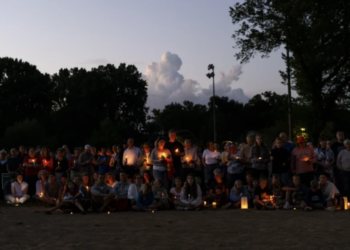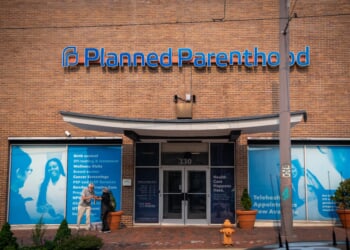Seventy-five years ago, on September 15, 1950, U.S. forces under the command of Gen. Douglas MacArthur landed at Inchon, a port located near the waist of the Korean peninsula. Korea is shaped like a slightly bent and lumpy rectangle. American, U.N., and South Korean forces had been driven back by North Korean forces to a small perimeter near Pusan. The fighting was fierce, especially in the first two weeks of September 1950. At MacArthur’s request, American troop reinforcements temporarily stopped the onrushing North Korean forces. But our troops were barely hanging on to Korean territory. The Pusan Perimeter was what MacArthur’s biographer William Manchester called a “narrow enclave.” Correspondents covering the fighting warned of an “American Dunkirk.”
In August, MacArthur’s enemies in Washington took umbrage at a message MacArthur sent to a veterans’ convention that the United States had a strategic interest in the defense of Formosa (Taiwan). President Truman, Manchester wrote, gave serious thought to firing MacArthur and replacing him with Gen. Omar Bradley. MacArthur was ordered to withdraw the message, and he reluctantly complied. “MacArthur nursed this new grudge,” Manchester wrote, “watched warily for more blows from Washington, and vowed to confound his enemies by unsheathing his sword in a dazzling stroke that would blind them all.” He conceived a brilliant and daring plan to relieve the pressure at Pusan and change the course of the war, initially codenamed Operation Bluehearts and later changed to Operation Chromite.
Inchon, Manchester explained, was a “great turning movement” reminiscent of Hannibal in the Punic War, Lee and Jackson at Chancellorsville, and MacArthur’s own triumphs in New Guinea in World War II. In his memoirs, MacArthur described his plan as a “turning movement deep into the flank and rear of the enemy that would sever his supply lines and encircle all his forces south of Seoul.” It would be a “great amphibious movement” launched at a port where high tides would complicate any invasion. The doubters among the U.S. military hierarchy were legion. Amphibious operations, they said, were obsolete. The tides were too high. The terrain near Inchon was too hazardous. Inchon was too far in the rear of the enemy. (RELATED: MacArthur Lands at Atsugi Airfield: August 30, 1945)
As he listened to the doubters, including members of the Joint Chiefs of Staff, at a conference at his headquarters at the Dai Ichi building in Tokyo, MacArthur recalled that he could almost hear the words of his father, Gen. Arthur MacArthur, who once said to him: “Doug, councils of war breed timidity and defeatism.” MacArthur replied: “The very arguments you have made as to the impracticabilities involved will tend to ensure for me the element of surprise,” which he said was the “most vital element for success in war.” He then compared his plan for landing at Inchon to British Gen. James Wolfe’s invasion of Quebec at the Plains of Abraham, where he defeated French forces under the Marquis de Montcalm in 1759 during the French and Indian War. “Like Montcalm,” MacArthur said, “the North Koreans would regard an Inchon landing as impossible. Like Wolfe, I could take them by surprise.”
MacArthur compared the fighting near the Pusan perimeter to “beef cattle in the slaughterhouse.” “It is plainly apparent,” he told the chiefs, “that here in Asia is where the communist conspirators have elected to make their play for global conquest.” He finished with a rhetorical flourish: “Make the wrong decision here — the fatal decision of inertia — and we will be done. I can almost hear the ticking of the second hand of destiny. We must act now or we will die. … Inchon will not fail. Inchon will succeed.”
MacArthur himself was concerned. He called Inchon “the most intricately complicated amphibious operation I had ever attempted.” He recalled thinking as his ship, the Mt. McKinley, approached the invasion site on September 14th: “I alone was responsible for tomorrow, and if I failed, the dreadful results would rest on judgment day against my soul.”
The next morning, MacArthur watched as naval gunfire and air strikes silenced the guns on the harbor island of Wolmi-do. Then the 5th Marines stormed ashore, established a beachhead, and secured Wolmi-do. Later that afternoon, when the tides were right, the 1st Marines, along with army units, landed on Inchon’s beaches. MacArthur had achieved complete surprise. Kimpo Airfield was seized, and eventually, Seoul was liberated. Inchon achieved everything MacArthur said it would. Admiral William “Bull” Halsey called Inchon “the most masterly and audacious strategic stroke in all history.” Defense Secretary George Marshall lauded MacArthur for his “daring and perfect strategical operation.” President Truman called Inchon a “brilliant maneuver” and saluted MacArthur for planning and executing a military operation that few in history can match. The Joint Chiefs praised him for his “brilliant and audacious leadership.” Retired Gen. Dwight Eisenhower applauded MacArthur for his “boldness in striking deep into the enemy’s vitals.” Air Force General Carl Spaatz called MacArthur after Inchon “the greatest general of all times.”
Military analyst H. Pat Tomlinson wrote about Inchon that “General MacArthur’s brave decision earned him a place among the great captains of the past.” Historian Geoffrey Perret wrote that MacArthur at Inchon accomplished the “supreme test of generalship that places him among the other military immortals.” It is no wonder that William Manchester judged MacArthur to be “the most gifted man-at-arms this nation has produced.”
READ MORE from Francis P. Sempa:
Charlie Kirk Is a Casualty of the Cultural Counterrevolution





![Gavin Newsom Threatens to 'Punch These Sons of B*thces in the Mouth' [WATCH]](https://www.right2024.com/wp-content/uploads/2025/08/Gavin-Newsom-Threatens-to-Punch-These-Sons-of-Bthces-in-350x250.jpg)
![ICE Arrests Illegal Alien Influencer During Her Livestream in Los Angeles: ‘You Bet We Did’ [WATCH]](https://www.right2024.com/wp-content/uploads/2025/08/ICE-Arrests-Illegal-Alien-Influencer-During-Her-Livestream-in-Los-350x250.jpg)








